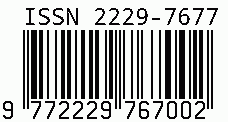
International Journal on Science and Technology
E-ISSN: 2229-7677
•
Impact Factor: 9.88
A Widely Indexed Open Access Peer Reviewed Multidisciplinary Bi-monthly Scholarly International Journal
Plagiarism is checked by the leading plagiarism checker
Call for Paper
Volume 16 Issue 4
October-December 2025
Indexing Partners



















Optimizing Email Spam Detection and Natural Language Processing with Keyword Driven Multi-Class Labeling
| Author(s) | Dr. Nilambari Arvind Jagtap, Mr. Om Sanjay Patil, Mr. Sajjan Rajendra Ahiwale, Mr. Ajay Appa Mane |
|---|---|
| Country | India |
| Abstract | Email has become a key part of our daily lives, both at work and at home. It helps us communicate and share information quickly and easily. But with the rise of SPAM emails, there are growing problems like security risks, overloaded inboxes, and missed important messages. SPAM emails often contain scams, viruses, or unwanted ads, which can be dangerous for individuals and businesses. this project explores ways to improve SPAM detection using machine learning and natural language processing (NLP) to better understand email content and reduce errors. We also created a simple keyword-based system that sorts emails into five categories Spam, Promotion, Social, Updates, and Primary. While the keyword system helps manage emails quickly, it can misclassify some messages. the study shows how combining machine learning with NLP can make email filtering smarter and more reliable. |
| Keywords | Email SPAM detection, Natural Language Processing (NLP), Machine Learning Algorithms, Data Mining, Deep learning. |
| Field | Mathematics > Statistics |
| Published In | Volume 16, Issue 3, July-September 2025 |
| Published On | 2025-08-24 |
| DOI | https://doi.org/10.71097/IJSAT.v16.i3.7826 |
| Short DOI | https://doi.org/g9x3zs |
Share this


CrossRef DOI is assigned to each research paper published in our journal.
IJSAT DOI prefix is
10.71097/IJSAT
Downloads
All research papers published on this website are licensed under Creative Commons Attribution-ShareAlike 4.0 International License, and all rights belong to their respective authors/researchers.

